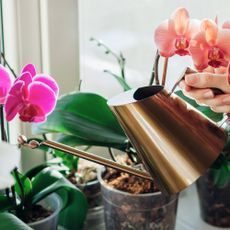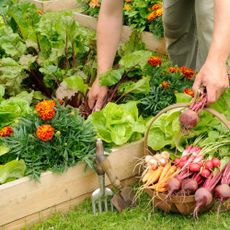Top 10 Questions About Berms

Here at Gardening Know How we get lots of questions, and our goal is to provide answers to those inquiries to the best of our knowledge.
Adding berms to the landscape is a common practice for many homeowners and gardeners. As such, there are a number of issues that may need to be tackled as you consider their construction. Below are the 10 most commonly asked questions about berms in the landscape.
1) Is there something or some way of keeping the weeds down in my berm? Organic mulches can be very beneficial in preventing weeds in a berm. Weed barrier fabric will also minimize weeds and can be installed under soil or mulch. Cut holes in the fabric where plants will be installed. Additionally, adding groundcovers to the berm can help prevent some weeds while also holding soil in place.
2) What types of plants are good for preventing soil erosion in a berm? While nearly any plant can be used in a berm, its construction usually determines the best type. When you are constructing berms for soil erosion, or if eroding soil is an issue within an existing berm, then suitable plants, like groundcovers, are a perfect way of conserving soil in these hilly situations. Tenacious plants like ivy, vinca, or thyme will quickly cover the berm, holding soil with their roots and rambling stems. Grasses with fibrous, spreading root systems are also terrific soil holders.
3) Do you have any ideas for planting and designing landscaping berms? Plants for berms abound as do the many reasons you may have for adding them to your landscape. One of the easiest ways to landscape with almost no maintenance is to use native plants. They are uniquely adapted to survive without human intervention. Before planting anything, chart out the plan on graph paper. Make sure selected plants are suited to the site and install the tallest plants so they won't cover or shade lower specimens. Also, determine how the berm is to be used (to redirect water, prevent soil erosion, ornamental, etc.) and choose your plantings accordingly.
4) Will plant roots freeze when planting in berms? Berms are generally built out of soil and/or layers of organic material. These create an insulated bed that actually will keep roots warm. Plants at the edge of the berm are more exposed to open air and do have the potential to freeze but a thick cover of mulch should protect them. Additionally, prior to planting, ensure that the plants you're wanting to add are hardy to your region as well as the area in which they're to be planted.
5) What are the best plants and groundcover to use for berms? Because of the shape of a berm, the top will be drier than the base. Select plants for the top that can tolerate periods of dryness and use moisture lovers around the edges. You can choose to landscape with groundcovers, shrubs or just flowers. It depends upon the site and conditions. A fun spring to summer berm might be covered in Wave petunias.
Gardening tips, videos, info and more delivered right to your inbox!
Sign up for the Gardening Know How newsletter today and receive a free download of our most popular eBook "How to Grow Delicious Tomatoes."
6) How to allow for soil settling when designing a berm? On average, the berm will settle to almost half its height over time. If you want a very high berm, build it initially taller than you require. The more organic matter used to make the berm, the more it will settle. For less settling, use a base of rocks and top these with your soil.
7) What would happen if we built a berm on top of the asphalt driveway? Where you decide to site a berm is important and should not be placed over top of asphalt or concrete. The asphalt will not allow adequate drainage, potentially causing loss of soil and water-logged plant roots. Any space that will be accommodating plants should have plenty of drainage.
8) How do you water trees in a berm? If possible, create a well around the tree at installation. This will form a catch basin that traps moisture. Soaker hoses are also useful as they deliver water slowly, preventing run-off. There are also slow release water delivery bags that you can purchase.
9) How to get professional looking edging for berms? Lawn and garden centers carry numerous edging options that are easy to install. Rocks or bricks are an affordable edging, but you can also build a low retaining wall to set off the plants in the berm. Low compact shrubs can also be used to edge around the berm for a natural look.
10) What mulch works well for berms in the lawn? You can use recycled tire mulch, plastic mulch or whatever you prefer when mulching berms. Bark mulch has the added benefit of beauty and it slowly composts into the soil, adding nutrients. Plus, it can be an organic addition to the garden. We all have questions now and then, whether long-time gardeners or those just starting out.
So if you have a gardening question, get a gardening answer. We're always here to help.
-
 How Often To Water Orchids – The Definitive Guide
How Often To Water Orchids – The Definitive GuideOrchids are too often victims of under and over-watering. Discover how often popular species need to be watered and the key signs to look for.
By Amy Grant
-
 5 Fast-Growing Intercrops To Max Out Your Vegetable Garden
5 Fast-Growing Intercrops To Max Out Your Vegetable GardenEven the smallest gardens can have mighty growing potential. These delicious intercrops are quick and easy to grow and will make your veg plot more productive.
By Amy Grant